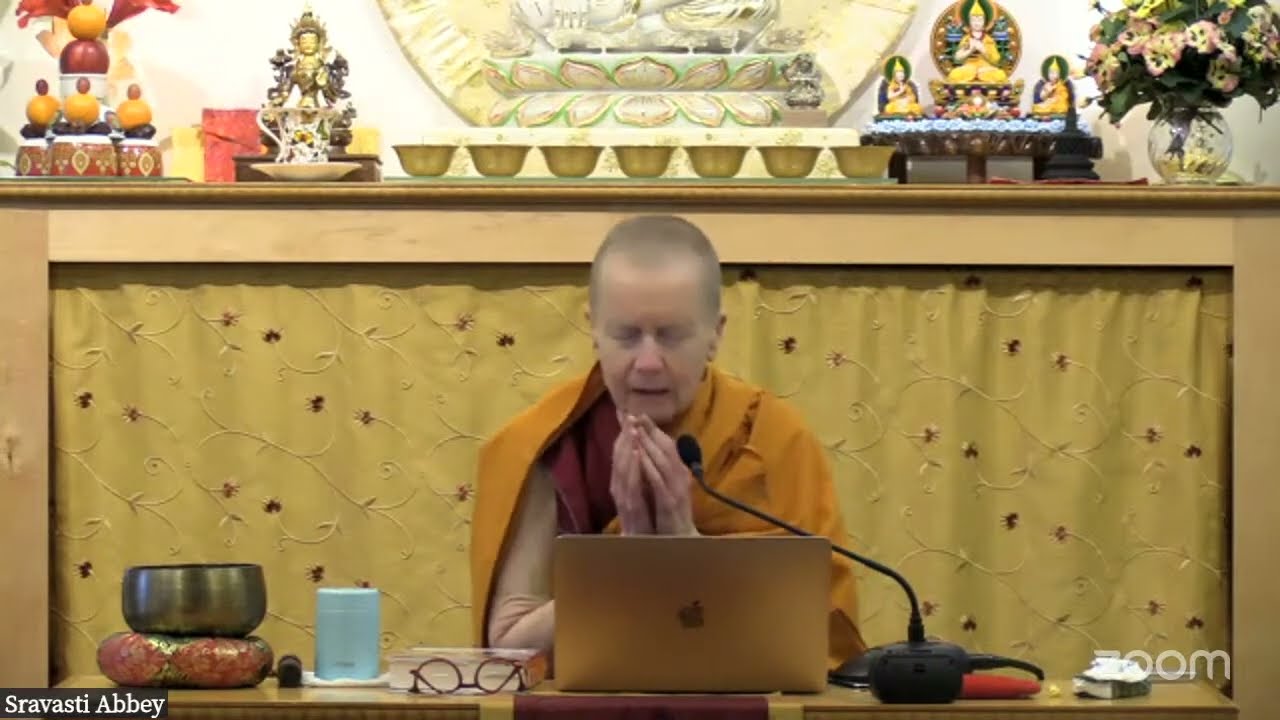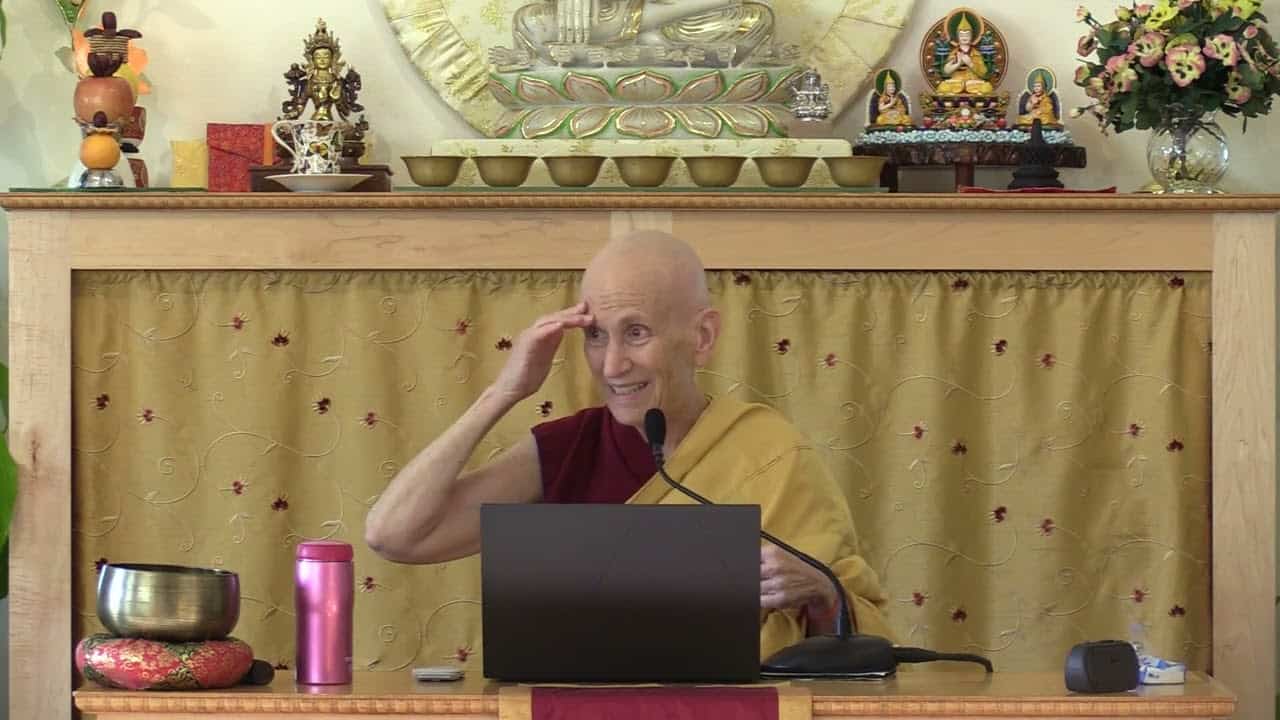Intent and purpose of monastic life
37 Following in the Buddha's Footsteps
Part of an ongoing series of teachings based on the book Following in the Buddha's Footsteps, the fourth volume in The Library of Wisdom and Compassion series by His Holiness the Dalai Lama and Venerable Thubten Chodron.
- Monastic community and flourishing of the dharma
- Explanation of the three ceremonies that monastics carry out
- Reflecting on the teachings to naturally develop the intention to become a monastic
- Changing the mind is important part of practice
- Reflecting on death, impermanence, compassion and emptiness
- Maintaining a daily practice and listening to the teachings
- Reasons why Buddha established the monastic community
- Developing proper attitude for becoming a monastic
37 Intent and Purpose of Monastic Life (download)
Contemplation points
- What makes a place a “central land” in Buddhism is the presence of the four-fold assembly and the practice of the three vinaya rights. Describe each of these and why they are necessary and important to the continuity and flourishing of the Dharma?
- Why is it important for a practitioner to have “stable” interest in the Dharma when considering monastic life? What reflections are most helpful in leading the mind naturally to this kind of stable interest and why?
- Contemplate::
- How does reflecting on the four truths lead us to an aspiration to be free from samsara?
- How does reflecting on compassion and dependent arising lead to becoming interested in the nature of the mind?
- How does being interested in the nature of the mind lead to an appreciation of emptiness?
- How does an appreciation of emptiness lead to an understanding of rebirth and then to the possibility of achieving liberation?
- And finally, how does the possibility of liberation lead to being drawn to a life lived according to precepts.
Venerable Thubten Chodron
Venerable Chodron emphasizes the practical application of Buddha’s teachings in our daily lives and is especially skilled at explaining them in ways easily understood and practiced by Westerners. She is well known for her warm, humorous, and lucid teachings. She was ordained as a Buddhist nun in 1977 by Kyabje Ling Rinpoche in Dharamsala, India, and in 1986 she received bhikshuni (full) ordination in Taiwan. Read her full bio.


